Explaining the Characteristics of the Great East Japan Earthquake using the Idea of Complex Crises
Office for Aiding Reconstruction from the Great East Japan Earthquake/Composed Crisis Research Institute
In response to the unprecedented disaster that Eastern Japan faced on March 11, 2011, Waseda University established a disaster response headquarters immediately after the earthquake, and worked towards determining which students, alumni and teachers were affected as well as working on other urgent needs. On April 8 theOffice for Aiding Reconstruction from the Great East Japan Earthquake was established with the three aid objectives of (1) Educational aid for students affected by the disaster, (2) Aid for regions affected by the disaster, and (3) Recovery aid through research. Through it the school as a whole has provided aid in a variety of ways.
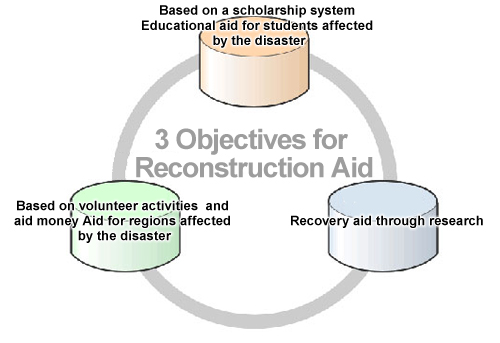
The 3 Objectives for Reconstruction Aid of Waseda University's Office for Aiding Reconstruction from the Great East Japan Earthquake
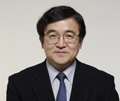
Professor Tomoya Shibayama, Director of the Composed Crisis Research Institute
In order to carry out the 3rd objective of recovery aid through research, the Waseda University Institute for Research on Reconstruction from the Great East Japan Earthquake was established on May 8. Three multidisciplinary collaborative research projects were decided on, (1) Medical/health reconstruction research, (2) Infrastructure/disaster prevention reconstruction research, and (3) City planning/social system reconstruction research. Including aid from the Waseda Supporters' Club for research activities, the university decided on research grants of ・20 million for 3 years. On June 1, the three research projects were officially established and work began.
Of these research projects, the Composed Crisis Research Institute is handling the infrastructure/disaster prevention reconstruction research. Research is being led by Professors Tomoya Shibayama, Teruhiko Yoda and Kazuo Kamura from the Faculty of Science and Engineering, as well as Professor Shunji Matsuoka from the Faculty of International Research and Education, and deals with damage from tsunamis, environmental impact, and how to respond to massive complex crises. This research should help aid reconstruction, as well as contributing to future prevention efforts. We asked Professor Tomoya Shibayama, the institute's director, about their activities since being founded and future plans.
Looking at the Big Picture for Complex Crises
"As a specialist in coastal disaster prevention, it was of course my responsibility to be involved in reconstruction aid, but with the university as a whole dealing with disaster reconstruction aid, I was able to collaborate with professors in other fields and approach the research project from the broader perspective of complex disasters," said Professor Shibayama.

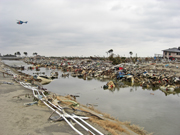
Study of Area Affected by the Great East Japan Earthquake (Arahama, Wakabayashi-ku, Sendai, Miyagi. March 25, 2011)
The Great East Japan Earthquake was certainly a complex disaster. Everything was destroyed by the massive force of earthquakes and tsunamis. This also led to many large scale fires occurring. With the addition of the disaster at the nuclear plant and radiation contamination, the situation became even more complex. Chemical substances that were swept up in tsunamis are leaking out of debris piles in affected areas. Where will irradiated soil be taken, and how will it be dealt with? The big picture must be considered for this complex crisis, and reconstruction aid has to be approached as an issue that affects all of Japan.
The Composed Crisis Research Institute's approach deals with (1) Mechanisms of tsunami damage and tsunami protection, (2) Environmental impact, and (3) Massive complex crises.
Research on mechanisms of tsunami damage is being led by Professor Shibayama, an authority on tsunami and storm surge disaster research, and Professor Teruhiko Yoda, a professor of bridge engineering. Japan is the country that brought the word "tsunami" to the world stage, and is a leader when it comes to research and experience with tsunamis. Even so, Japan was severely damaged by tsunamis. It is important for researchers to remember this fact. The goal of this research project is to actively learn from this disaster, and make fundamental improvements to predicting damage from tsunamis, designing port facilities and breakwaters/seawalls, and tsunami evacuation planning.
Research into environmental impact is being led by Professor Kazuo Kamura, a specialist in environmental geology and waste disposal engineering. Samples have already been collected and analysis has begun to determine the quantities of artificial chemicals mixed in with debris, how much is collected in which areas, and how it is leaking out and affecting the environment.
According to Professor Shibayama, "Although it is hard work, researchers are very persistent once they've decided to do something. Professor Kamura is giving his all for this research."
Research on massive complex crises is being led by environmental economics and environmental policy specialist Professor Shunji Matsuoka, focusing on the nuclear disaster in Fukushima. A sociological approach is being incorporated to analyze the decisions made on site and decision-making processes, as well as the structure of the relationship between the power plant, the municipality and the Government.
Professor Shibayama said that "I myself have done research using an approach of sociology of construction on building social consensus on disaster reconstruction and building of infrastructure. By collecting a variety of data such as surveys of those involved and minutes of meetings, and then using methods such as qualitative analysis of the meaning of discussions and statements, the processes of decision making and reaching consensus are analyzed and researched.
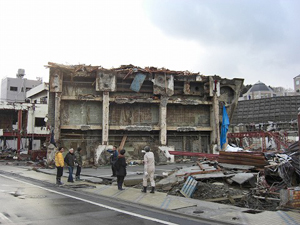
Study of Area Affected by the Great East Japan Earthquake (Onagawa, Miyagi. March 26, 2011)
Regional Redevelopment Plans Based on Past Experience
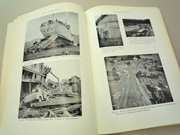
Report on the 1960 Chile Earthquake Tsunamis (1961)
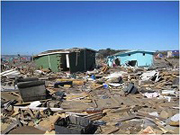
Study of the 2010 Chile Earthquake Tsunamis (Shibayama Lab)
"In the past six months, I have visited affected areas many times to carry out on-site studies. In the Aneyoshi district of Miyako, Iwate where a tsunami reached a height of 39.7m, I met a 100 year old fisherman. He had lived through the tsunami of the Sanriku earthquake in 1933. Apparently only four people survived. After this experience, they moved the village in Aneyoshi to high ground 60m above sea level and went back and forth between the fishing port and the village. That is why this time there were no casualties in Aneyoshi despite the tsunamis," said Professor Shibayama.
"Even though the Sanriku earthquake is more or less forgotten even in Aneyoshi, they still had not returned any lower than 40m above sea level. The tsunamis from the 1960 Chile earthquake were significantly smaller than those from the Sanriku earthquake, but unfortunately many areas remembered this experience instead. There were those who thought they would be safe as long as they were higher than the tsunamis that occurred with this earthquake in Chile. This experience had a negative impact, and made the damage more widespread. In order to avoid a repeat of this, past data should be scientifically analyzed and considered when rebuilding areas."
When it comes to scientific techniques regarding disasters, experience makes all the difference. Japanese tsunami researches have gained experience by studying damage from the tsunamis of the 1960 Chile earthquake and of the 2007 Sumatra earthquakes. The researchers involved in studying the tsunami damage from the Chile earthquake have already retired, but carefully collected records remain in book form (see image).
Professor Shibayama said "Researches involved in on-site studies at that time have already retired. Some of the older researches have been helping with aid in affected areas. Also, they have already started making reconstruction plans in areas such as Iwate. Throughout the country, evacuation plans are being reconsidered with the largest scale tsunamis taken into account."
Students Cultivating Experience through Studies of Affected Areas
Students have made noticeable contributions to this project. In September, on-site studies were carried out over 3 days with a large group of 48 students and 3 faculty members. Teams were made of a mix of fourth year and graduate students to study various topics such as temporary housing, the ground, concrete, and port buildings. The first night was spent in Kitakami, Iwate and the second night was spend in Sendai, with the teams splitting up to go do their own studies, then returning late at night to organize data and results, and then presenting the results of the previous day's study at a morning meeting with all the teams before going out to the next study site, making for a hard schedule.
"Many students from other research labs joined in the project. This was the first time I ever took charge of students from other labs to perform on-site studies in areas affected by disaster. What surprised me most was the quality of their study reports. The approaches taken by each team were at a level of quality equal to that of conference papers," said Professor Shibayama.
For example, the bridge study team focused on bridges that were still being used despite being partially damaged and reported how corrosion was gradually spreading to central areas and making the bridges more dangerous. The coastal environment study team focused on how the sand from beaches along affected coasts had been swept inland by the tsunamis. Normally, typhoons will carry sand out to sea, so gradually the sand beaches along the coast will become replenished, but the students reported that this time there was a high likelihood that the beaches will remain damaged.
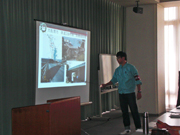
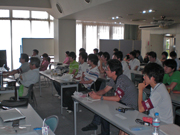
Meeting between students and professors in area affected by the Great East Japan Earthquake (September 17, 2011)
"Our university's response time after the earthquake was very rapid. After the earthquake on March 11, lab members were assigned for the next year, and each member of the teaching staff came forward with research themes related to the earthquake. This meant that a lot of new fourth year students participated in this project when it started in June, and I feel they demonstrated how capable Waseda students can be," said Professor Shibayama.
For students in their early twenties, going into areas affected by disaster and experiencing those sites themselves will be a lasting experience, and those students will help form a basis for disaster prevention in Japan for at least the next 50 years.
Professor Shibayama said "It is important that the experiences of the affected areas be applied in other areas of Japan. The governments of Kanagawa Prefecture, Yokohama City and Minato ward in Tokyo have already been given practical advice that they should reconsider their evacuation plans. It is important that places that weren't affected as badly as Tohoku consider that disaster might strike there next, and they should prepare for the worst. By studying ancient texts in the region and geological evidence, information on past tsunamis can be found and demonstrate the danger to those areas, and help when creating new evacuation and disaster prevention plans."
By considering disaster prevention plans for Japan as a whole not just as something that people in other areas need to worry about, but as a serious issue facing everyone, only then will aid for reconstruction in affected areas be properly understood and supported.
Links
- Waseda University Organization for University Research Initiatives, Institute for Research on Reconstruction from the Great East Japan Earthquake/Composed Crisis Research Institute
- Waseda University Office for Aiding Reconstruction from the Great East Japan Earthquake
- Waseda University Faculty of Science and Engineering
